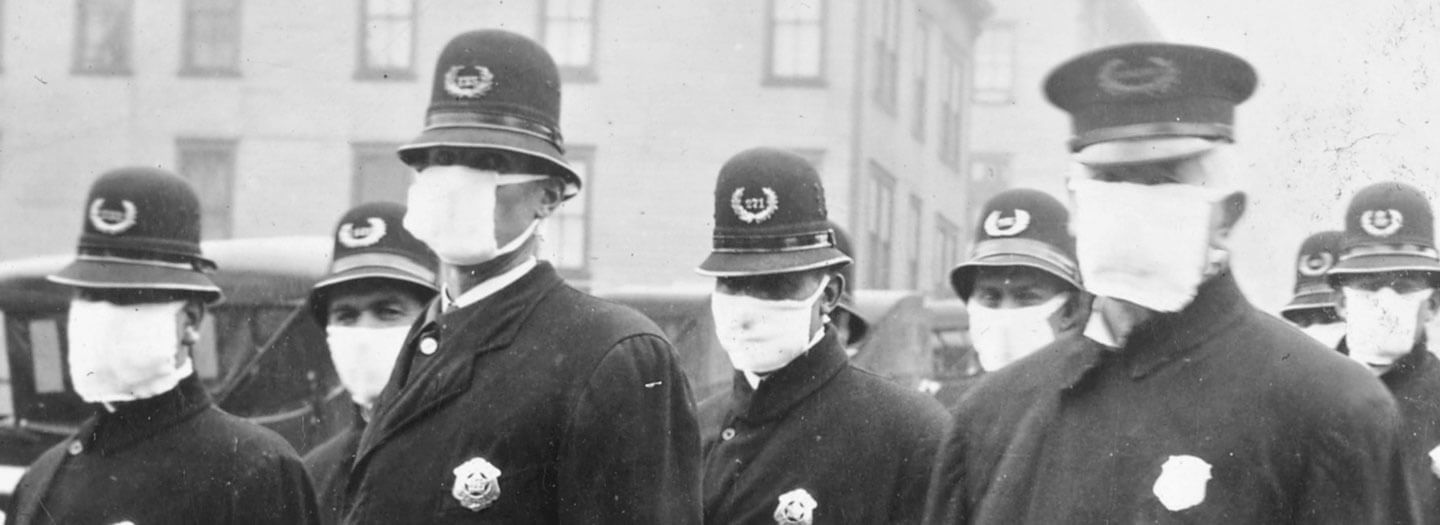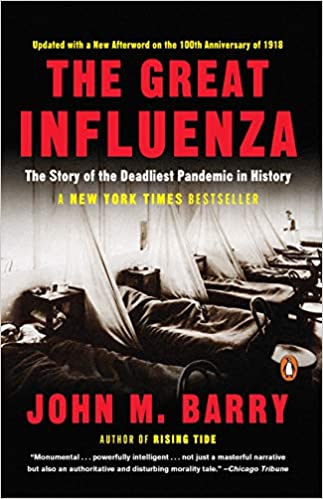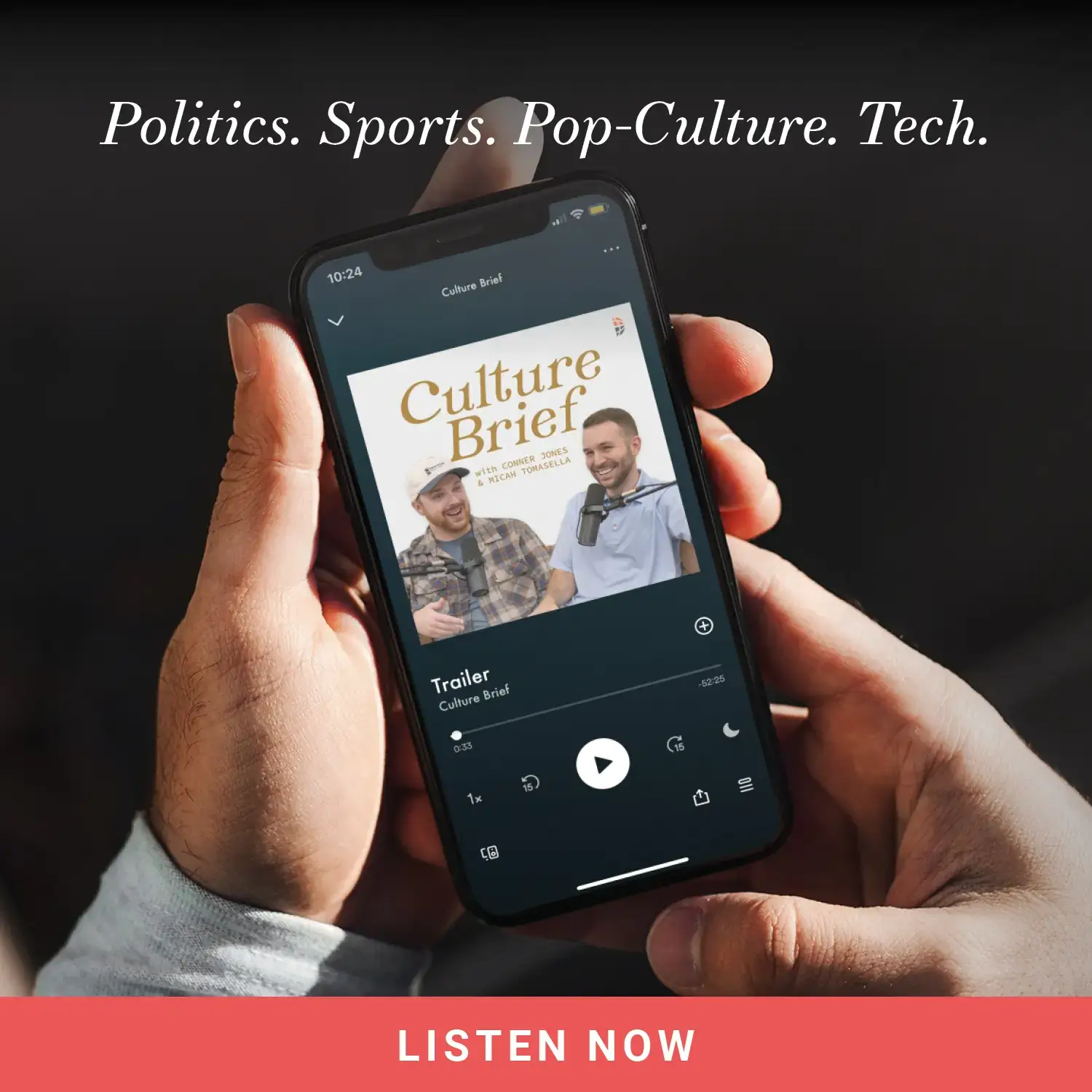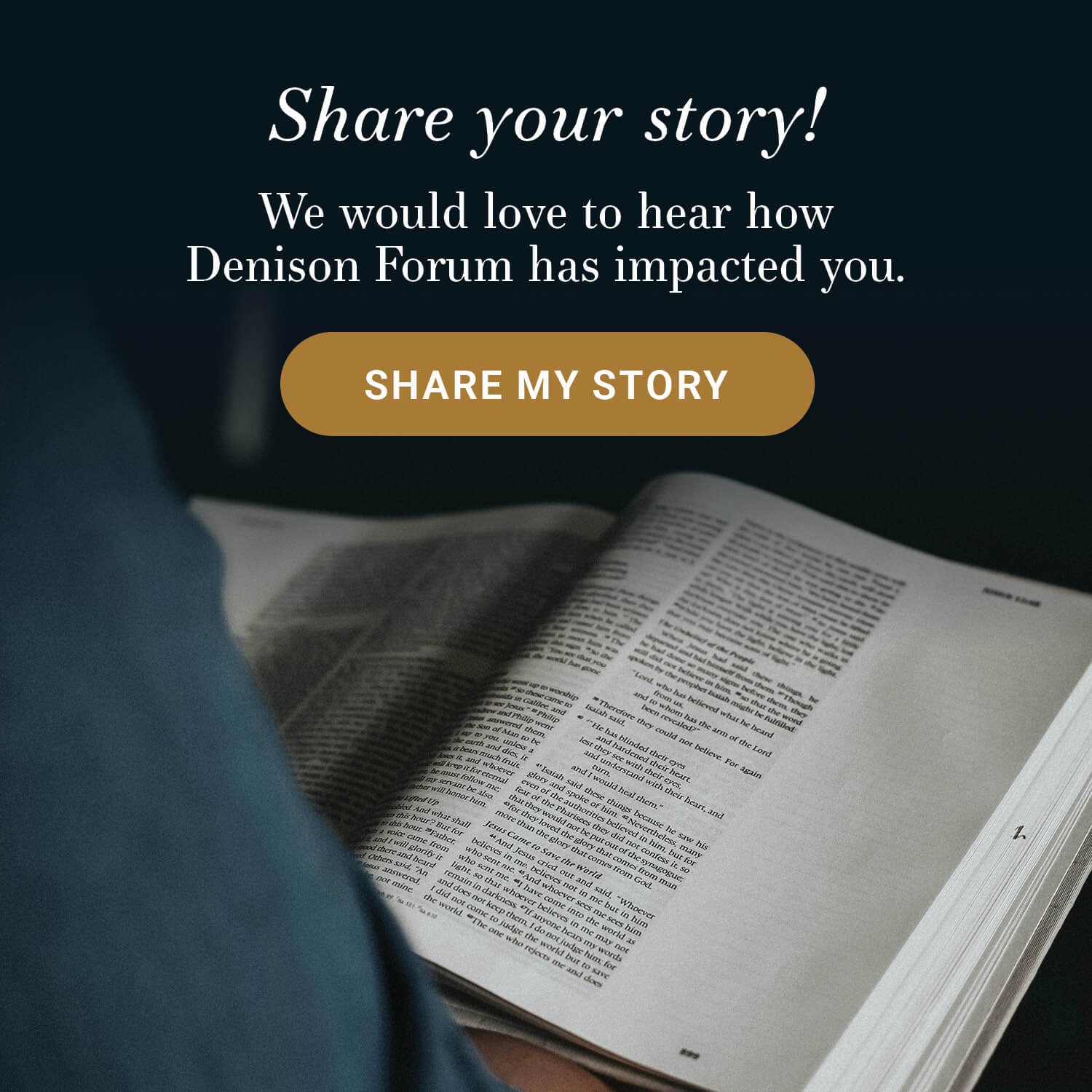
Police in Seattle, WA, wear masks during the "Spanish flu" pandemic of 1918. Public domain.
The influenza pandemic of 1918, the deadliest outbreak of disease in modern times, exacted a terrible toll, and not just in lives. Much like the coronavirus today, it strained the bonds holding society together.
The Centers for Disease Control and Prevention says that at least 50 million people died during the influenza outbreak—more than during World War I—including about 675,000 in the US. Some epidemiologists think the death toll could have been as high as 100 million, John M. Barry wrote in The Great Influenza: The Story of the Deadliest Pandemic in History.
In Philadelphia, one of the hardest-hit cities in America, “fear came and stayed,” Barry wrote. “Death could come from anyone, anytime. People moved away from others on the sidewalk, avoided conversation; if they did speak, they turned their faces away to avoid the other person’s breathing. People became isolated, increasing the fear.”
How some Christians responded to the 1918 pandemic
Although health officials have avoided comparisons between the outbreaks, the impact of influenza one hundred years ago on community life, such as church services, seems eerily familiar today.
In Providence, Rhode Island, evangelist Billy Sunday held a crusade, with one newspaper reporting that ten thousand people “grasped Mr. Sunday’s hand.” Although he vowed to “pray down” the epidemic, people in the crowd, sick with the flu, collapsed. The influenza canceled three weeks of his nightly services.
Government officials around the country called a halt to public meetings such as church services for safety’s sake, just like during the coronavirus outbreak. With no place to meet, pastors sent their sermons to local newspapers to print. One pastor in Los Angeles had Boy Scouts deliver Sunday school lessons to his church members. Other pastors encouraged their flocks to meet in homes, like the apostles did.
In Ennis, Texas, a man said that he wouldn’t be able to attend worship services for the first time in twelve years. But he told the Gospel Advocate, “We had three funerals here Sunday.”
Some churches protested restrictions on indoor services. Others got around them by meeting outside. At the First Baptist Church of San Francisco, the theme of one such Sunday service was “The Spanish Influenza, One of the Last Plagues.”
The “Spanish flu” didn’t originate in Spain
The name of the pandemic was a misnomer.
“Epidemiological evidence suggests that a new influenza virus originated in Haskell County, Kansas, early in 1918,” Barry wrote. “Evidence further suggests that this virus traveled east across the state to a huge army base, and from there to Europe. Later it began its sweep through North America, through Europe, through South America, through Asia and Africa, through isolated islands in the Pacific, through all the wide world.”
Newspapers in the countries fighting World War I avoided negative news, not wanting to hurt morale in wartime. Spain, however, was neutral and did not censor coverage of the influenza. Once the story was picked up elsewhere, newspapers began calling the disease the “Spanish influenza” or “Spanish flu.”
Stepping over corpses
Wartime conditions contributed to the spread of the virus.
Soldiers, jammed into barracks at home and trenches at the front, moved from base to base and from America to Europe. One of the worst outbreaks came at Camp Devens near Boston. Built to hold 36,000 men, Devens held 45,000 in September 1918.
In mid-August, soldiers began reporting sick with pneumonia, but Army doctors did not think influenza was the underlying cause. As the outbreak progressed, they thought it was meningitis. With no quarantine, soldiers congregated in living quarters and mess halls. By the time doctors realized the outbreak was influenza, it had spread throughout the camp. By Sept. 22, one-fifth of the camp was on sick report.
The camp normally had about twenty-five doctors. One doctor wrote to a fellow physician that staffing increased tenfold during the outbreak, with each doctor assigned a ward with about 150 beds.
“Soldiers clutching blankets lined up outside the hospital in the rain while cots overflowed into hallways and onto porches,” the New England Historical Society reported. “Doctors had to step over piles of corpses to watch an autopsy.”
When the outbreak ended, more than eight hundred enlisted men had died, not including doctors, nurses, and chaplains.
When was the worst over?
The unpredictability of the disease added to the terror it caused.
A person could be healthy at daybreak and dead by nightfall. Normally, the young and the old are the most vulnerable to influenza, but this strain often took people in the prime of life. The average life expectancy in the US dropped by more than ten years during the pandemic, Barry wrote.
He noted that the virus constantly mutated and came in three waves lasting for two years. (Dr. Anthony Fauci, director of the National Institute of Allergy and Infectious Diseases, has predicted another wave of the coronavirus in the fall.)
The most deadly wave of influenza, the second one, hit Philadelphia particularly hard. “Overcrowded before the war, with jobs sucking ever more workers into the city and the population swelling to 1.75 million, Philadelphia literally teemed with people,” Barry wrote, adding that city government was ill-equipped to handle a crisis: “Muckraker Lincoln Steffens called Philadelphia ‘the worst-governed city in America.’”
The top health official in the city denied that influenza posed a threat and made no preparations for it. He didn’t want to take any steps that might create a panic and interfere with the war effort. For similar reasons, Philadelphia newspapers avoided publishing negative news.
Barry described how four days after sailors from Boston arrived at Philadelphia’s navy yard, nineteen sailors reported sick with influenza symptoms. As the virus spread, the city’s top health official refused to cancel a parade designed to sell millions of dollars of war bonds, and hundreds of thousands of people jammed the parade route on Sept. 28.
“Within seventy-two hours after the parade, every single bed in each of the city’s thirty-two hospitals was filled,” Barry wrote. “And people began dying.”
As the daily death toll mounted, The Great Influenza showed, public health officials and newspapers repeatedly said the worst was over. “Undertakers, themselves sick, were overwhelmed,” Barry wrote. “They had no place to put the bodies.” Then, when 4,597 Philadelphians died during the week of October 16, actually marking the worst of the epidemic in the city, people no longer trusted what they read.
What the “Great Influenza” has taught us
History can teach us important lessons at times like these.
In 2005, President George W. Bush read an early copy of The Great Influenza and instructed his staff to develop a plan for the next pandemic, a plan that experts say could still be used today.
Barry concluded in the book that one of the lessons of the influenza pandemic was the importance of government officials telling the truth.
He also showed that pandemics come in waves, so Americans should not expect the coronavirus to be any different.
In 1918, people crowded together in places like military camps and great cities often fell victim to influenza, highlighting the importance of physical distancing.
Finally, Barry emphasized the social toll of the pandemic, quoting a man from Washington, D.C., who said, “You had no community life, you had no school life, you had no church life, you had nothing.”
Today, during the coronavirus pandemic, Americans struggle to foster social interaction while maintaining physical distance. But we have so many tools, like smartphones and social media, that Americans didn’t have a century ago.
Christians should use these new technologies to reach out to others during these difficult—but not unprecedented—times.












